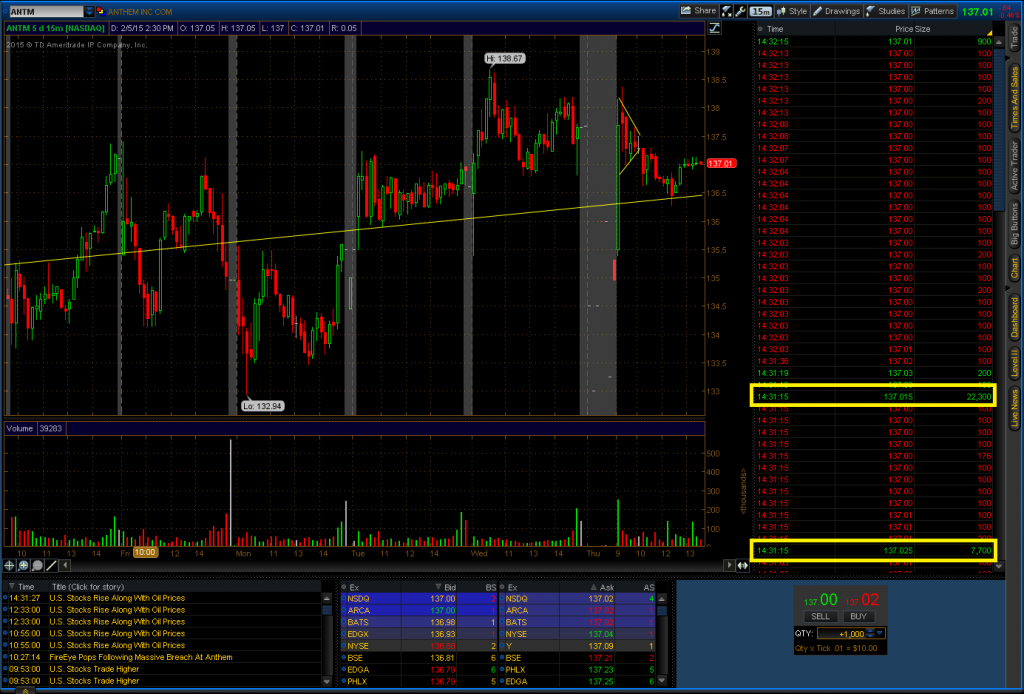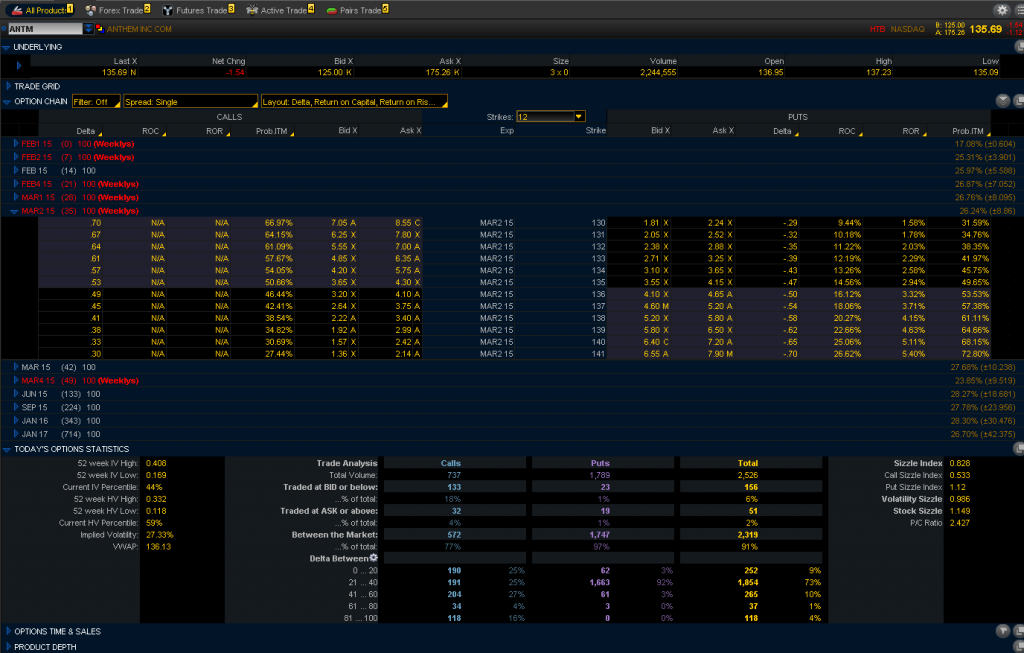We have a question from #DTsR listener @fsmontenegero regarding security and efficient market hypothesis. That is a very broad topic that could go in many different directions, and the ambiguous answer is one that people are sure to dislike.
@Wh1t3Rabbit @dearestleader loved your recent pod cast. Any thoughts on security and efficient market hypothesis?
— Fernando Montenegro (@fsmontenegro) February 20, 2015
Efficient Markets Hypothesis (EMH) via Investopedia:
…defined as a theory that it is impossible to beat the market because stock market efficiency causes existing share prices to always incorporate and reflect all relevant information. According to the EMH, stocks always trade at their fair value on stock exchanges, making it impossible for investors to either purchase undervalued stocks or sell stocks for inflated prices. As such, it should be impossible to outperform the overall market through expert stock selection or market timing, and that the only way an investor can possibly obtain higher returns is by purchasing riskier investments.
I’m not a fan of EMH for the same reasons I’m not a fan of the economic theory of perfect competition. Generally speaking many of these theories and hypothesis were invented as an unrealistic baseline. Why would anyone want to do that? My Finance II professor had a nice simple explanation. There are so many variables in the world it’s difficult to compare one company to another. We use many different theories and hypotheses to create an apples-to-apples or even playing field to compare Company A to Company B. We then add real world variables to help determine which one is the better company. We also have to realize that Investor A may be more concerned with double bottom line efficiency, while Investor B may care about triple bottom line corporate social responsibility. Once you get past a few variables you can come to different conclusions.
Another interesting fact from class is that with all the financial professionals and their predictive models the best you can hope for is to get it right 60% of the time. A coin toss has a 50% chance of winning so why spend all this time and money on financial engineering and forecasting? It turns out that 10% is huge so it’s definitely worth the effort. The lesson here is small percentages have big effects so don’t thumb your nose at 1%. 1% better than you were yesterday is better than 0%. You can take this to anything beyond finance as well. 1% improvement in this iteration of your anti-bribery, infosec, environmental, or other programs is a win. Iterate often and don’t give in to managers who say we need to show 5% improvement before beginning your next iteration because you’re likely to iterate only once or twice per year. If you get 1% 12x per year that’s a better payoff.
There is also another angle to everyone knowing the same thing. It does no good unless you act on it. This is a lesson learned from Tom Sosnoff, founder of ThinkOrSwim (now part of TDAmeritrade) and TastyTrade.com. Every stock market pundit can say what they want. For example, I think the US Dollar is going to continue to decline over the next 3 years due to Quantitative Easing and the debt the Government has taken out. Well, that’s great what kind of trade are you going to put on and why? Information needs to be insightful and actionable. Otherwise you’re just talking on CNBC or you’re the guest columnist of the week in SC Magazine or CISO Online. If you watch any of Tom’s shows they always have a trade to go with a hypothesis.
To illustrate the failure of EMH we can look at many of the recent hacks such as $TGT. The intruders something about $TGT that they didn’t know. We do not have an efficient market here because one side knows more than the other. Based on what was reported there has been speculation that $TGT had a team that notified another team who didn’t respond. If we follow this scenario we have two different levels of knowledge on one side with a different level on another side. Definitely not equal. Then when we look at actionable information, the hackers were taking action against $TGT while their response teams were still in the dark.
Let’s also take a look at EMH from the investor’s point of view. Until we tested our hypothesis of shorting the equities of hacked companies many people in the Infosec world made the mistake contributing to echo chamber that hacked companies were going to $0 just like the political doomsayers state that the USD is going to $0 because of Federal Reserve money printing and the debt load the US is carrying. If you were to take action on those (bad) assumptions would be down $45,000 in our simulated portfolio of hacked stocks. The same would have happened if you had bet long on EUR/USD. If you were to have placed a $100,000 bet on the dollar going down the day after President Obama was reelected, you would have had to put up $2,276.30 in collateral to borrow $100,000 from your broker and you would be down $17,000 on your $2,200 bet. As a matter of fact the whole notion that the USD was going to $0 was a fantasy, much like hacked companies going to $0. The reality hurts the wallet big time. There’s a saying, markets can remain irrational longer than you can remain solvent. If you had bet against the USD since the election you would have lost more money than you had put up on the wager.

When you panic sell on news of a hacking there will always be someone there to #BTFD. If investors did know everything the big funds know, then they wouldn’t be selling and the buying pressure would be lower because there would not be a discount from selling. EMH and other theories are excellent in a classroom setting, but quickly fall apart once you enter the real world. Not everyone can know everything, but do your research and put the research to the test and you will be victorious. All strategies need to be insightful and actionable. Some people have the insightful part down, we all need to work on the actionable.


